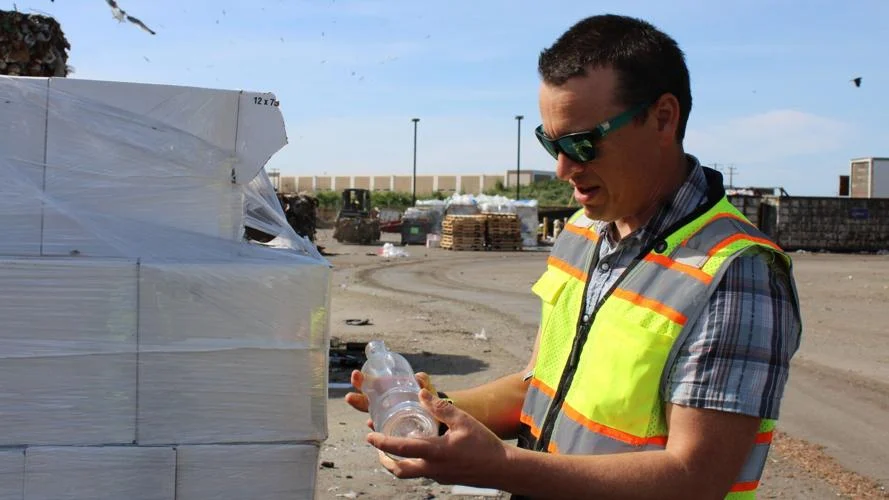Napa Valley’s eco-minded wineries are reducing their waste — keeping more and more grape pomace, water and glass out of the local landfill — but the cardboard and Styrofoam materials used for shipments, which overwhelming go out of the area, is another matter entirely.
Cut the cardboard: Eliminating wine waste with reusable shipping alternatives
According to Tim Dewey-Mattia — recycling and public education manager for Napa Recycling and Waste Services — there has been a rise in the number of sustainable packaging alternatives to Styrofoam.
“But some of them are not actually any better,” he said.
In his role at Napa Recycling, Dewey-Mattia aids local businesses seeking more sustainable solutions for their own operations, and in doing this, he has accumulated a pile of different packing materials from wineries that are just that: Different … but perhaps not better.
In recent months, he said about a dozen local wineries have come to him with questions, leaving behind prototypes for his inspection.
Some of the materials look like augmented egg cartons, foam stuffed between plastic sheets and uber-thin blow-up mattresses, but even when the funky strips are labeled as recyclable or compostable, Dewey-Mattia warned that this isn’t always true.
One shipping alternative made of hemp and jute fiber, he said, is 25% polyester.
“So if it is recycled, you would just end up with a bunch of microplastics in our compost,” he said.
Similarly, he says not all recycling centers across the state, country and world can process the same large variety of stuff as the Napa facility, and when considering that most wine shipments are being hauled elsewhere, there is no guarantee that the packaging protecting the vino even can be recycled wherever it ends up.
“Unless everybody is using the same packaging, it is confusing for the consumer … Are they supposed to know all the nuisances of what is recyclable and isn’t?” said Dewey-Mattia. “It all comes back to needing reusable packaging, because single-use packaging is often very complicated.”
Several pieces of tech designed to help find reusable, temperature-specific shipping materials have come on the market, including boxes made out of moldable mushrooms and Otterbox’s recent invention, the Liviri Vino.
A reusable box holding four to six bottles, the Liviri offers thermal protection for up to a week and be reused for two-plus years. According to Liviri general manager Chuck Kukic, this means that after about 25 uses, the box has officially outperformed its single-use counterpart, and once the box can no longer be used, the box, inserts and ice packs are all recyclable.
While drop-off and pick-up wine shipment companies are out there, Dewey-Mattia said it has to be a profitable model to have it work on a large scale. So, despite a playbook on being a “Zero Waste Winery,” and a few sustainable options, for the most part, wineries are responsible for cutting down on their own waste.
Places like Trinchero Family Estates, in working with an organization like Napa Green, have ensured that their suppliers take back and re-use any unbroken pallets, drums and boxes, and at Napa’s Domaine Carneros, this has resulted in a 12-years-running packaging reuse program to make the most out of their materials that would otherwise be considered single-use and tossed.
Since adopting the program, staff have been trained to cut open and reuse their cardboard boxes in a certain, extra-careful way, allowing them to shift from a two-use lifespan model to five, and drastically cutting down on the amount of cardboard they go through.
“The program allows us to reuse about 25% of our total packaging, and we have recycled 1,009,674 pieces of packaging since the start of our program,” said Riley Sanchez. “On average, this saves the company about $75,000 a year.”
To date, she estimates this program has saved the winery about $750,000.
“Our tips for wineries considering starting their own program are to continue sustainability education and to track everything,” said Sanchez. “Sustainability is a journey, not a destination … It requires continuous improvement, and we are always working towards being more sustainable today than we were yesterday.”
Making the commitment to third party certification takes time and effort, but it is worth it to demonstrate our commitment to the community and to protect our watershed, our land and the air we breathe.
- Susan Boswell, Chateau Boswell Winery



